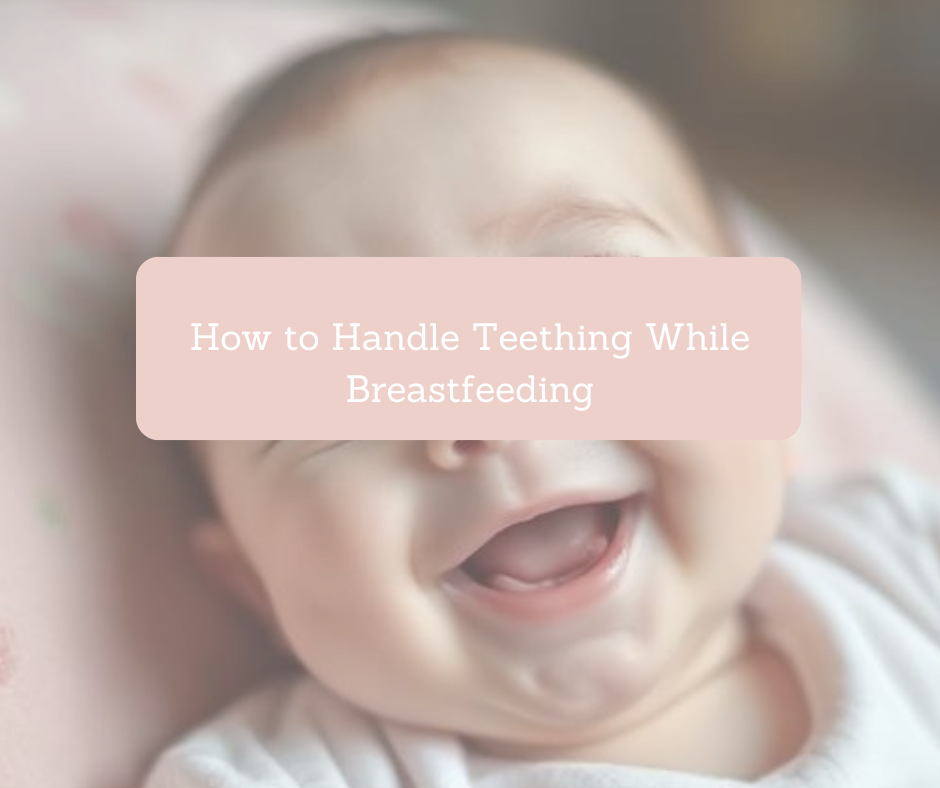
How to Handle Teething While Breastfeeding
Share
Let me tell you about the first time one of my twins bit me while nursing.
I yelped—loudly—and scared us both. She started crying, I started crying… and for a moment, I thought, “Is this the end of breastfeeding?”
Teething throws a curveball into what’s already an emotional, sacred, and sometimes complicated part of motherhood. Your baby’s gums are swollen and sore. They’re drooling, fussy, and desperately trying to find relief… and unfortunately, your nipple sometimes becomes the chew toy.
But I want you to know this: teething doesn’t have to end your breastfeeding journey.
There are ways to protect your body and your bond through it.
Here’s everything I’ve learned about surviving—and even thriving—through teething while breastfeeding.
Why Babies Bite During Teething
First, it’s not personal. Your baby isn’t mad at you or trying to hurt you—they’re uncomfortable, overstimulated, and often unsure how to communicate what they need.
Common reasons for biting or latching issues during teething:
- Swollen, tender gums
- Frustration or sensory overload
- Curiosity (yes, even at your expense!)
- Poor latch due to mouth discomfort
Tips to Make Breastfeeding Easier During Teething
1. Offer a Teether Before Nursing
Let your baby chew on a cold, soft teether or a clean damp washcloth before feeding. This soothes the gums and satisfies their chewing urge before your nipple’s in the line of fire.
2. Watch for Pre-Bite Cues
Babies often tense their jaw or pause sucking right before biting. If you notice this, gently unlatch and offer a teether instead.
3. Respond Calmly (But Firmly)
If your baby does bite:
- Unlatch calmly
- Say “no biting” in a gentle but firm tone
- Pause for a few seconds before re-latching
- Consistency helps them connect the dots.
4. Check Latch Position
A shallow latch can increase discomfort for both of you. Reposition the baby to get a deep, effective latch that reduces pressure on sore gums and your nipple.
5. Try Different Nursing Positions
Side-lying or laid-back positions can ease pressure and offer more comfort for a teething baby who’s struggling to find a good latch.
6. Nurse in a Calm Environment
Teething babies get distracted so easily. Try nursing in a dim room or using white noise to reduce fussiness and help them focus.
7. Wear a Comfy Bra
When you’re already bracing for bites or latching struggles, your body deserves softness. A comfortable, wire-free nursing bra can ease tension, support your changing shape, and keep you cool through all those sweaty, bitey moments.
🌸 I created Bloom & Heal’s signature maternity bra for days like these—stretchy, gentle, and easy to unclasp one-handed (even when teething tantrums hit).
A Note From One Tired Mom To Another
If you’re feeling nervous every time you sit down to feed, you’re not alone. I’ve been there—clenching, wincing, even dreading the latch.
But this is just a phase.
A hard one, yes. But temporary.
Your baby isn’t rejecting breastfeeding—they’re just figuring out how to nurse in a body that’s changing daily.
So give yourself grace.
Keep tools nearby (teethers, your favorite nipple balm, your softest bra).
And remember: biting isn’t the end. It’s just a new chapter—and you’ll both learn how to turn the page.
FAQs
Q: Can I keep breastfeeding if my baby has teeth?
A: Yes! Many babies breastfeed well past getting teeth. With a good latch, you shouldn’t feel biting or pain.
Q: How do I stop my baby from biting during nursing?
A: Use pre-nursing teethers, watch for cues, and gently but firmly say “no biting” if it happens. Consistency helps.
Q: Does teething affect milk supply?
A: Not directly, but if the baby nurses less or fusses during feeds, your supply might dip. Keep offering and pumping if needed.
Q: Should I wean during teething?
A: Not unless you want to. Teething doesn’t require weaning—though some moms do use the phase as a natural transition point.
Q: Can teething cause nursing strikes?
A: Yes, some babies refuse to latch during painful teething days. Offer comfort, try again later, and pump if needed to protect supply.

















































